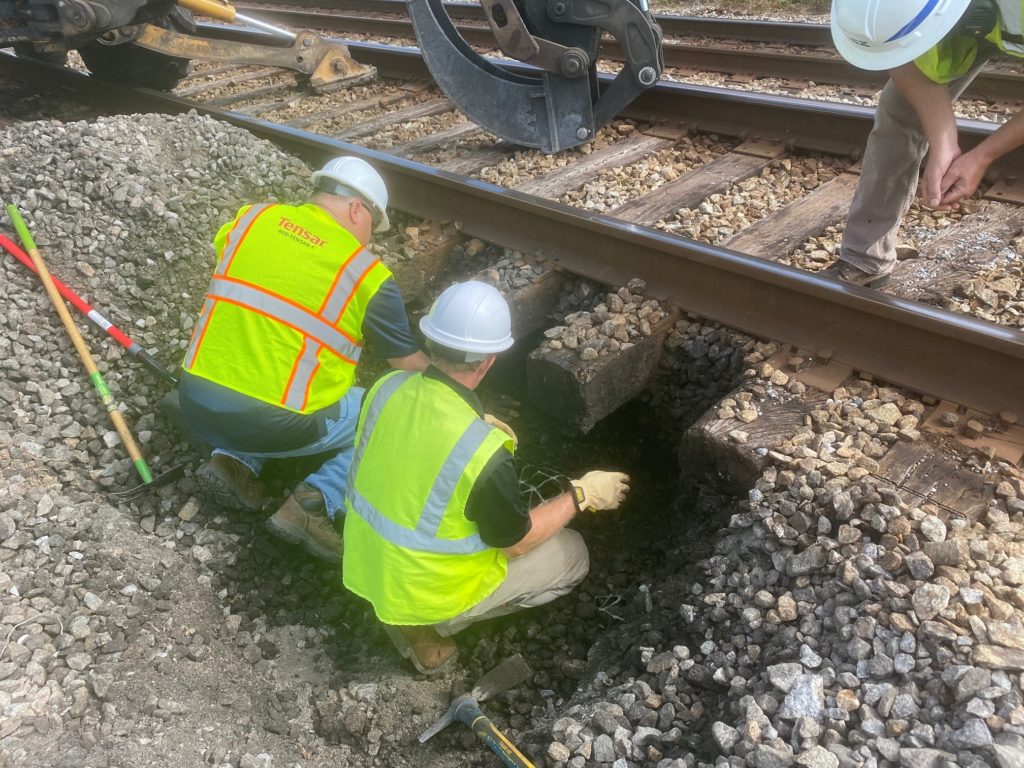Tensar Corporation, a global leader in geogrid engineered solutions for civil and rail construction, has partnered with Atlantic Track, a manufacturer of specialty trackwork and supplier of high-quality track materials to help rail owners extend the service life of their rail components. This partnership brings highly technically trained engineers to the market who can help create a more resilient and sustainable solution for the rail industry. In turn, this will help ensure every project has a high-performance solution that will not impact the bottom line.

By utilizing Tensar geogrid solutions, Atlantic track has been able to extend the service life of tracks which leads to reduced aggregate consumption, reduced carbon footprint and the ability to meet or exceed stringent environmental requirements. “We are excited to have Atlantic Track as a key partner to continue efforts to extend service life of rail systems throughout the country,” says Don Herbert, Tensar Market Manager Rail. “Atlantic Track brings significant value to us in the form of solid engineers and extensive technical products and expertise to provide solutions to support railroading resources.”
“Tensar is an ideal partner for us because of the complementary geogrid products they bring to the rail industry,” added Rob Beard, Atlantic Track. “Our goal is to create a powerful and complete solution for our clients while striving to provide increased growth.”
Tensar geogrid has demonstrated its ability to sustain resiliency over time in the rail industry. In 1988, CSX, working with Atlantic Track, installed Tensar geogrid to improve performance and extend maintenance intervals for a high-volume, poor performing, frequently maintained section of track at the Port of Mobile in Alabama. This rail segment carries heavy coal freight trains between Siebert Yard to the McDuffie Bulk terminal over a tunneled section of I-10, and the heavy usage resulted in monthly maintenance and complete resurfacing every six months.
In 1989, the 1,000-foot segment was reengineered using Tensar’s multi-layer Georgrid system. The installation consisted of one layer of geogrid beneath the sub-ballast and another between the ballast and sub-ballast. Mean average time between maintenance intervals was immediately extended by a factor of three to four. Over time, they improved further until this section of track was performing as good, if not better, than any other section along this run. But that durability extends beyond normal wear and tear. Mobile Bay is particularly vulnerable to ever-increasing adverse weather events, and that segment has been flooded regularly. In 2005, Hurricane Katrina covered it in more than 12 feet of floodwater.
In 2020, samples of the geogrids were exhumed from a 1,000-foot section and tested after 32 years of service and most stabilization properties were still in keeping with 1989 specifications. With the substantial reduction in maintenance and materials cost, and the proven performance benefits of geogrid stabilized layers found in the Mobile Bay installation, this confirms that geogrid should be a key element of all rail rehabilitation and new construction projects to achieve both infrastructure resilience and environmental efficiency. To learn more about the partnership visit https://www.tensarcorp.com/applications/markets/railways
 TEXTILES.ORG
TEXTILES.ORG


